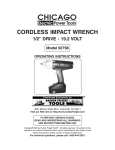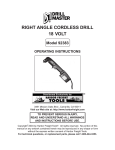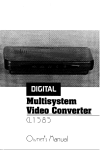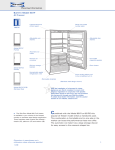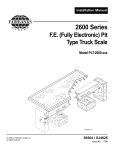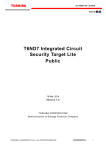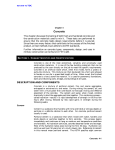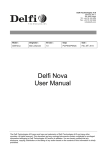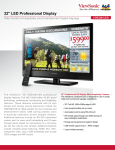Download Troubleshooting with Concrete
Transcript
Troubleshooting with Concrete - a Pre-mix Suppliers Perspective By: Joe Pietrosanto TJM Operations Pty Ltd Trading as: VIC MIX . Introduction Some typical problems faced by Concrete Suppliers: n While tendering for supply; n In the batch plant n on the construction site; and how they are resolved. Tendering for supply n Verbal requirements / orders n Written requirements / specifications Verbal Requirements / Orders n n n n The majority of price enquiries are received verbally Most jobs do not have a written specification. Sometimes, the specification is a note on a working drawing Often, the tender submission and review will take place in a single conversation which may result in concrete on site within the hour The most common problem is: n Misunderstanding of important project details and requirements When I said 4 “Meters”, I meant “Concrete” !!! Handling Verbal requirements n n n Enquiries are received in a modern Call Centre Computer systems control customer and project details Customer Service staff are trained to communicate effectively Typical Central Order Sales Office Computerised Systems control Customer details, enquiries and orders Environment, technology and training work to improve communication Written Specifications All major projects have written specifications The problems faced by Concrete Suppliers are: n Securing a current and complete copy of the Project Specifications from our potential Customers. n Interpreting the specification and designing concrete mixes to meet all relevant requirements. n Completing this entire process in as short a time frame as possible. The Concrete Industry sells concrete like pizza. Product can be ordered and delivered within the hour. The ingredients are different for each order and the product must reach the Customer while it is still fresh Specification Requirements Specifications often contain prescriptive and performance based requirements which aim to ensure the best possible concrete is supplied. Problems arise for the Pre-mix Concrete Supplier when • requirements conflict; or • requirements are not practical or commonly accepted mix design shall match the attached combined particle size distribution orkability: w r fo d e ir u q The concrete shall not exhibit any shrinkage lerances as re ce for % passing sieve to g in w o ll fo Toleran owed the No a ll a e b l il w d dmix +/- 4 ce g in d ra tures The concrete produ G te a g gre shallof +/- 3 ve or larger ombined Ag ie C s m m b 5 te .7 ra 4 e d an (a) ing incor +/- 2 .6mm sieve The number gregate pass 0 g p A to o m m r h 6 ts s a .3 s 2 te t g p e m in A ss lu d s a concrete conpc Aggreignate f Fly ited +/- 1 sieve o m f m o .3 e te 0 ra g s r e e in e v th u ss ohib ed Aggregate pa te 75mm sie The r .0 r shall be at 0 p e to m v y . m i k l 5 c el ct er tru ing 0.1 s stri one (1) test p shall be d t leaTsatrgAegt gregate pass Aggregates shall i a at all times be dealt with ates te Plant hand slump f in such a way that the g e ex r ac t we ight of any one size of ag Agg Concre tching con placed or gr egate may be incorporate a crete e a batch of concrete in ac d in to th before b co rd s e an ce h w x ith the a c ap pr oved design of a l eed rs batch to meet the strengt 20m l not 24 h h and density requireme m nts. Contract Review n The customer’s pricing inquiry is reviewed to ensure that requirements are understood and to examine our capacity to meet them. – This process involves n n n n using experience and technology to meet the Customer’s needs ensure that pricing is carried out in accordance with Company Policies ensuring we have the resources and capabilities to meet the requirements isolating requirements that cannot be complied with and resolving them prior to acceptance Addres Submission for supply of Concrete s the p roject r equirem ent Submit the p roducts and prices Submit features or clarification with the specification it th e Subm conc ns desig x i m rete ly s for supp n io it d n o ec Submit th Submit the performance data Performance Testing n Pre-mixed Concrete Suppliers are continuously expanding their testing capabilities to meet Customer requirements Slump Testing Core Testing Shrinkage Testing Air & Yield Testing Compression Testing AVPV Testing Indirect Tensile Testing Flexural Testing (Brazil or Splitting Test) (Modulus of Rupture) Problems at the Batch Plant n Materials Contamination n Batching tolerances Contamination in Raw Materials n some objects recovered from concrete over the last couple of years Wood 4 x 4 x 60 cm long Probably a broken formwork stake Source unknown Cast Iron Aluminium plate 1 x 10 x 50 cm long twisted and corroded piece of iron 0.5 x 14 x 27 cm Heavy wear on one end Source unknown Source unknown Clay Lump Rock Spall Approximately 16 cm diameter Approximately 10 cm diameter Hornfels rock Contamination is most likely from the Sand Quarry Pit Contamination most likely occurred at the Quarry Reducing contamination n Improved Bin Systems fitted with grates to reduce the possibility of contaminants entering the production process Ground bins allow multiple specialist aggregate products to be stored without contamination. Concrete Plant Bins The Grates prevent: • people falling inside the bin • as well as exposing and preventing large contaminants from entering the bin Batching Tolerances n n n Meeting batching tolerances are a prime concern for every concrete plant AS1379 recognises that tolerance are a practical necessity and has set requirements for all concrete ingredients. Errors in batching can alter the concrete’s expected properties. Some examples are: n Under batched cement may result in strength loss n Over or under dosed admixture may result in setting time variability n Over batched coarse aggregate may result in reduced pumpability n etc. Ensuring tolerances are met n Computers control batching and ensure tolerances are met n Regular maintenance and calibration of equipment reduces the number of plant malfunctions Computer systems Equipment maintenance Calibration Records Problems on site n Placeability and Pumpability n Concrete Bleeding and setting time n Concrete Defects Placeability and Pumpability n Placability and pumpability is generally dictated by the following: n Consistency or slump n Volume of fines n Size, shape and texture of coarse aggregates n Placability and pumpability is generally improved by: Increase in slump/consistency Increase in paste volume Increase in roundness Decrease in size of aggregate Pumping Lightweight n n n Significant cost savings are enabled with the use of lightweight concrete in the construction of highrise buildings. However, Lightweight can be difficult to pump and place successfully. Two factors are the most challenging when using lightweight in high rise construction n The aggregate; and n The vertical pumping distance. Number of floors Highly vesicular porous rock Typically 1600 kg/m3 Highrise Construction Pumping Lightweight n The key to pumping porous vesicular aggregates is pre-treatment at the Concrete Plant n Water sprays keep the aggregate saturated The result is: lightweight concrete capable of being pumped more than 25 floors in height. IBM & HWT City Road 222 Russell Street Concrete Bleeding Bleeding is the name given to the action of water rising to the top of concrete shortly after compaction. Factors which affect bleeding are: n n n n n Rate of evaporation Consistency or slump Volume of fines in the mix Bleeding is generally reduced by: n n n n An increase in temperature and the evaporation rate (ie summer time) A reduction in the water content of the mix An increase in the ultra fines content of the mix The use of specialist admixtures (ie Air Entrainers, fibres) Concrete Setting Time n Setting Time describes the period of time it take for the concrete to stiffen and harden. Factors which affect setting time are: n Temperature of concrete Concrete Setting Time n Graphed temperature data based on field tests performed on concrete in the field. – Deg C 20 Mean Concrete Temp 15 Mean Air temp Jul-00 Jun-00 May-00 Apr-00 Mar-00 Feb-00 Jan-00 0 Dec-99 0 No. of tests Nov-99 5 Oct-99 150 Sep-99 10 Aug-99 300 Jul-99 No. of tests 25 . Concrete Setting Time Setting Time describes the period of time it take for the concrete to stiffen and harden. Factors which affect setting time are: n n n n n n Temperature of concrete Quantity of mixing water Type of cements used in the concrete The presence of admixtures Setting time is generally reduced by: n n n n An increase in the concrete temperature (ie summer time) A reduction in mix water (ie reduce slump) The use of primary cementitious binders The use of non-chloride set accelerating admixtures Concrete Defects n The vast majority of complaints relate to defects in flatwork n Scaling n Dusting n Cracking n Most of these defects can be reduced or eliminated with the appropriate site practices Prevention is always better than a cure n Concrete Scaling n Scaling, blistering, delamination is when the outer surface of the concrete peals or pops off in a thin layer n n n the depth of the defect is shallow it typically occurs under conditions of high surface evaporation Things to watch out for: n n n Don’t allow the surface to dry out. This may form a skin under which bleed water and air can become trapped Don’t add water to the surface during finishing. This may re-hydrate the past, but leads to separation from the underlying concrete Protect the surface from drying out and apply even continuous curing asap Concrete Dusting n Dusting is characterised by the appearance of a fine powder as the surface wears under very light loading conditions n n n the defect is limited to the outer surface of the concrete low cement content mixes are more susceptible Things to watch out for: n n n n Do not perform any finishing operations while bleed water is on the surface Be wary of additional bleed due to placement over a non-absorptive subgrade Ensure the surface is protected from drying conditions Apply even continuous curing asap Plastic Cracking n Cracks which occur in the first few hours after placing as the concrete stiffens n n n often not visible or noticeable until the next day most common in flat work under conditions of high evaporation Things to watch out for: n n n n Remember to dampen the subgrade and forms during hot weather Erect wind breaks and spray aliphatic alcohol on the surface begin even continuous curing as soon as possible avoid placing concrete on hot, windy days End of Presentation n Thankyou for your attention




























